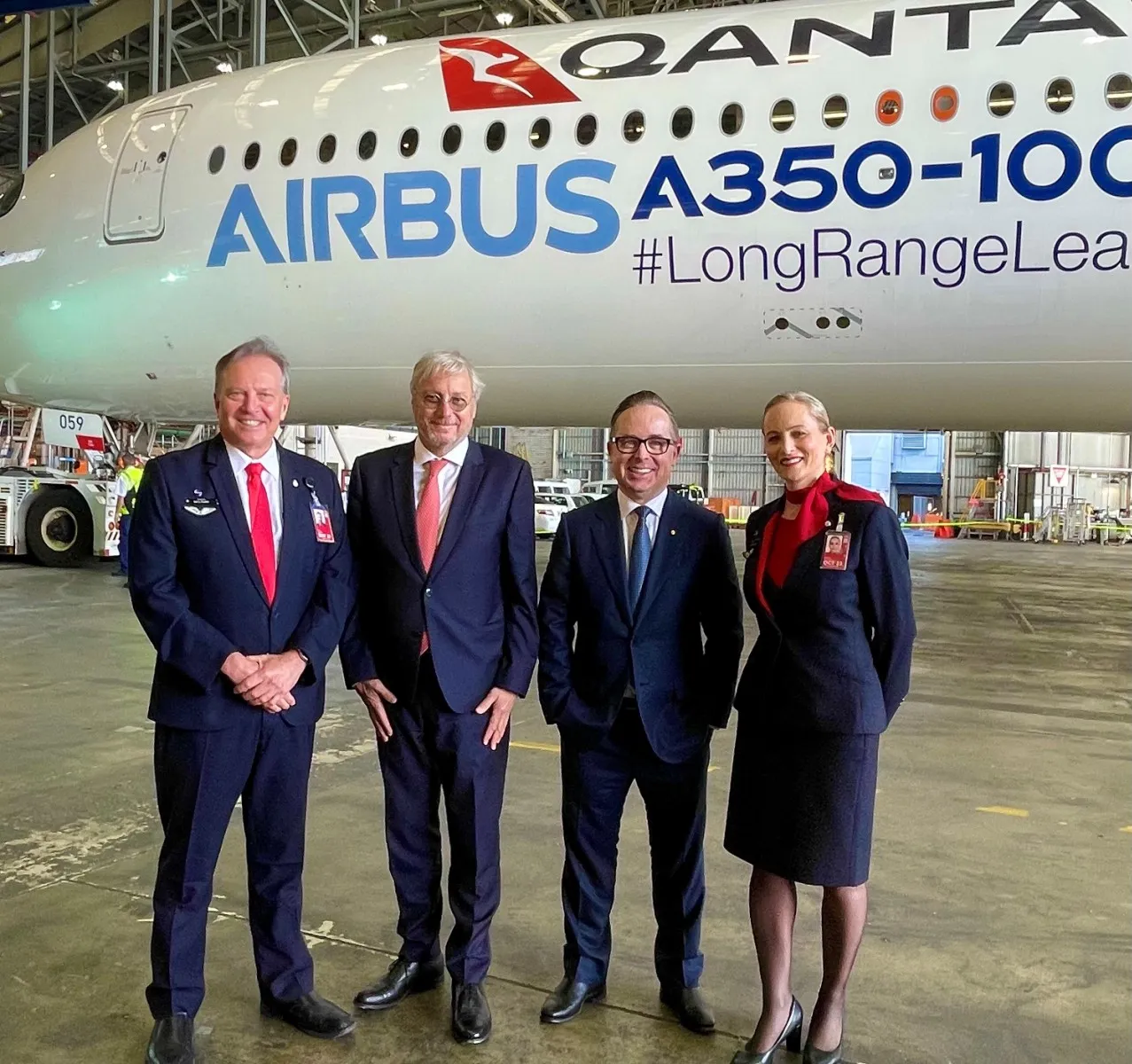
Qantas 11 weeks from declaring bankruptcy in 2020
May 02, 2022

In early 2020, Qantas faced an unprecedented crisis as the COVID-19 pandemic severely impacted global travel. With borders closing and demand plummeting, the airline found itself just weeks away from declaring bankruptcy. In a bid to navigate the turbulent landscape, Qantas implemented drastic measures, including grounding its fleet, laying off thousands of employees, and seeking government assistance. The airline's leadership worked tirelessly to restructure operations and secure financial stability, highlighting the challenges faced by the aviation industry during this tumultuous period. The situation underscored the vulnerability of even the largest carriers in the face of global disruptions.
In 2020, Qantas Airways faced an unprecedented crisis, leading the airline to the brink of bankruptcy. The COVID-19 pandemic brought global travel to a halt, severely impacting the aviation industry. With dwindling passenger numbers and significant financial losses, Qantas was just 11 weeks away from declaring bankruptcy. Understanding this pivotal moment in the airline's history is crucial for industry analysts, business students, and aviation enthusiasts alike.
Financial Overview of Qantas in 2020
At the onset of the pandemic, Qantas reported a staggering loss of $1.9 billion for the 2020 financial year. The airline's revenue plummeted as travel restrictions were implemented worldwide. This financial downturn was exacerbated by fixed costs that continued to accumulate despite the significant drop in passenger traffic.
| Key Financial Metrics | 2020 Financial Year |
|---|---|
| Total Revenue | $8.9 billion |
| Net Loss | $(1.9 billion) |
| Passenger Numbers | 30 million |
| Cash Reserves | $4.2 billion |
As shown in the table, the decline in passenger numbers and the resultant net loss painted a grim picture for Qantas. The airline's cash reserves were critical during this period, as they provided a buffer against mounting operational costs.
Government Support and Financial Measures
To navigate through this challenging period, Qantas sought government support. The Australian government introduced various initiatives to assist struggling airlines, including wage subsidies and loans. These measures were vital for Qantas, allowing the airline to retain employees and maintain essential services.
Moreover, Qantas implemented its own cost-cutting strategies. The airline announced a significant reduction in its workforce, with approximately 8,500 jobs cut. These measures, while painful, were necessary to ensure the airline's long-term viability in a rapidly changing industry.
Impact on Operations and Future Strategy
Qantas had to make difficult decisions regarding its operational strategy. The airline grounded a significant portion of its fleet and suspended international flights. This operational shift was essential to manage costs and preserve cash flow during a period of uncertainty.
Operational Changes Overview
| Operational Changes | Details |
|---|---|
| Fleet Grounding | Over 70% of aircraft grounded |
| International Flights | Suspended until borders reopen |
| Domestic Operations | Reduced capacity and frequency |
These operational changes allowed Qantas to adapt to the immediate challenges posed by the pandemic. However, the airline also began to develop a strategic plan for recovery once travel resumed.
Path to Recovery
By late 2020, Qantas began to outline its recovery strategy. The airline focused on several key areas to ensure a sustainable future:
- Health and Safety Protocols: Qantas implemented rigorous health measures to ensure passenger safety, which included enhanced cleaning protocols and contactless check-in options.
- Market Adaptation: The airline shifted its focus to domestic travel, recognizing that international routes would take longer to recover.
- Innovation in Services: Qantas explored innovative approaches to customer service, such as flexible booking options and additional loyalty program benefits.
These strategies were crucial for Qantas as it prepared to rebound from the crisis. The airline's commitment to adapting to new market realities demonstrated resilience and a forward-thinking mindset.
Conclusion
Qantas's near-bankruptcy experience in 2020 serves as a stark reminder of the vulnerabilities within the aviation industry. The airline's ability to secure government support, implement cost-cutting measures, and adapt its operational strategies were key components in its fight for survival. As the world gradually recovers from the pandemic, Qantas's journey highlights the importance of flexibility and innovation in overcoming unprecedented challenges.
In summary, the lessons learned from Qantas's experience are invaluable for other airlines and businesses facing similar adversities. By understanding the factors that led Qantas to the brink of bankruptcy, stakeholders can better prepare for future uncertainties and navigate the evolving landscape of the aviation industry.
Related Articles

Explore Thailand: The Best Islands to Visit for Paradise, Adventure, and Relaxation

The Ultimate Guide to the Best Islands in Thailand for Your Next Getaway

Do babies need passports? How to get a passport for a newborn

How to get a U.S. passport fast: here’s how to expedite the process

What is Mobile Passport Control: 5 reasons why you should use it

SENTRI vs. Global Entry: A detailed guide

Do you need a passport to go to the Bahamas? Let’s find out

Do you need a passport to go to Mexico? A detailed guide

Do you need a passport to go to Canada? We got the answer

Do You Need a Passport for a Cruise: An Essential Travel Guide

Booster Seat Requirements: All the Rules to Follow in Your Rental Car

What Are the World’s Most Powerful Passports, and How Does Yours Rank?

How to Take a Passport Photo at Home: A Helpful Guide

You've got to have heart! Southwest's new livery

Your opinion: Should water be free on low cost carriers?

Young women bolder than guys as solo travellers
